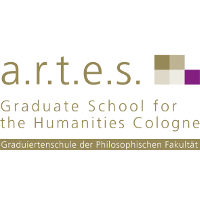Doctoral dissertation project of Burak Sezer
Thomas Pynchon’s Mathematical Poetics (working title)
In 1960, twenty-two year old US-American author Thomas Pynchon publishes “The Secret Integration,“ creatively exploiting the fact that ‘integration‘ bears both a mathematical and sociopolitical connotation. Here, the reader is exposed to a cathartic revelation: what at the outset seemed to be incommensurable—in the sense that political integration is not in any way related to mathematical integration—finds, through Pynchon’s imagination, a point of osculation that goes beyond a mere correlation of language. Through his knowledge of mathematics, Pynchon re-interprets the world, calling into question fossilized cultural idiosyncrasies, like ‘integration,‘ ‘individual,‘ ‘real/rational/complex/imaginary‘ or ‘group/family,‘ by referring to their mathematical counterparts.
Pynchon‘s early short story also sets the precedent of what is to become a dominant stylistic and poetical mode in his literary work: the synthesis of mathematics and literature. Novels such as Gravity’s Rainbow (1973), Mason & Dixon (1997), Against the Day (2006) and Bleeding Edge (2013) evince explicit references to calculus, algebra, vector geometry and probability theory. Thus, this project’s primary aim is to establish an overarching theory of when, where, and how Pynchon uses mathematics. Pynchon considers mathematics to be both liberator and captor: while geometry stands as a paragon for reductively tessellating space into tiny cells, for instance in 18th century English cartography, probability theory is envisioned to be the discipline that dispenses the world from its digital straightjacket of either/or, as, in Pynchon’s words, an “era of certainty comes crashing down.“ Pynchon’s use of mathematics is hence not monolithic, but rather highly context-sensitive; its development and gradation in his literary trajectory shall also be addressed.
Some Pynchon scholars have already written articles on Pynchon’s mathematics; however, in consideration of Pynchon’s abundance of mathematical references, this field of inquiry is still largely unexplored. A recent publication by Nina Engelhardt Modernism, Fiction and Mathematics (2018, EUP) marks the starting point of a new branch of Pynchon studies this dissertation tries to pursue. My advisors are Hanjo Berressem, Sascha Pöhlmann, and currently I am also working with Silvia Sabatini from the Mathematical Institute of the University of Cologne.
Short biography
Burak Sezer (born 1992) studied English Philology, Mathematics, Education at the University of Cologne (Staatsexamen), and Comparative Literature at the University of Rochester (M.A.). He co-taught two graduate-level tutorials for NAS-lectures in 2015/2016. During the 2018 summer semester, he worked as a research associate in the Faculty for Human Science with Jörg Zirfas. Currently, he is a scholarship holder of the a.r.t.e.s. Graduate School for the Humanities Cologne.
Contact: burak.sezer(at)gmx.de
Cover photo: By Prism-rainbow-black.svg: *Prism-rainbow.svg: Suidrootderivative work: Sceptre (talk)Prism-rainbow.svg: Suidrootderivative work: Sceptre (talk) - Prism-rainbow-black.svgPrism-rainbow.svg, CC BY-SA 3.0, https://commons.wikimedia.org/w/index.php?curid=6898196 // Portrait photo: Patric Fouad
